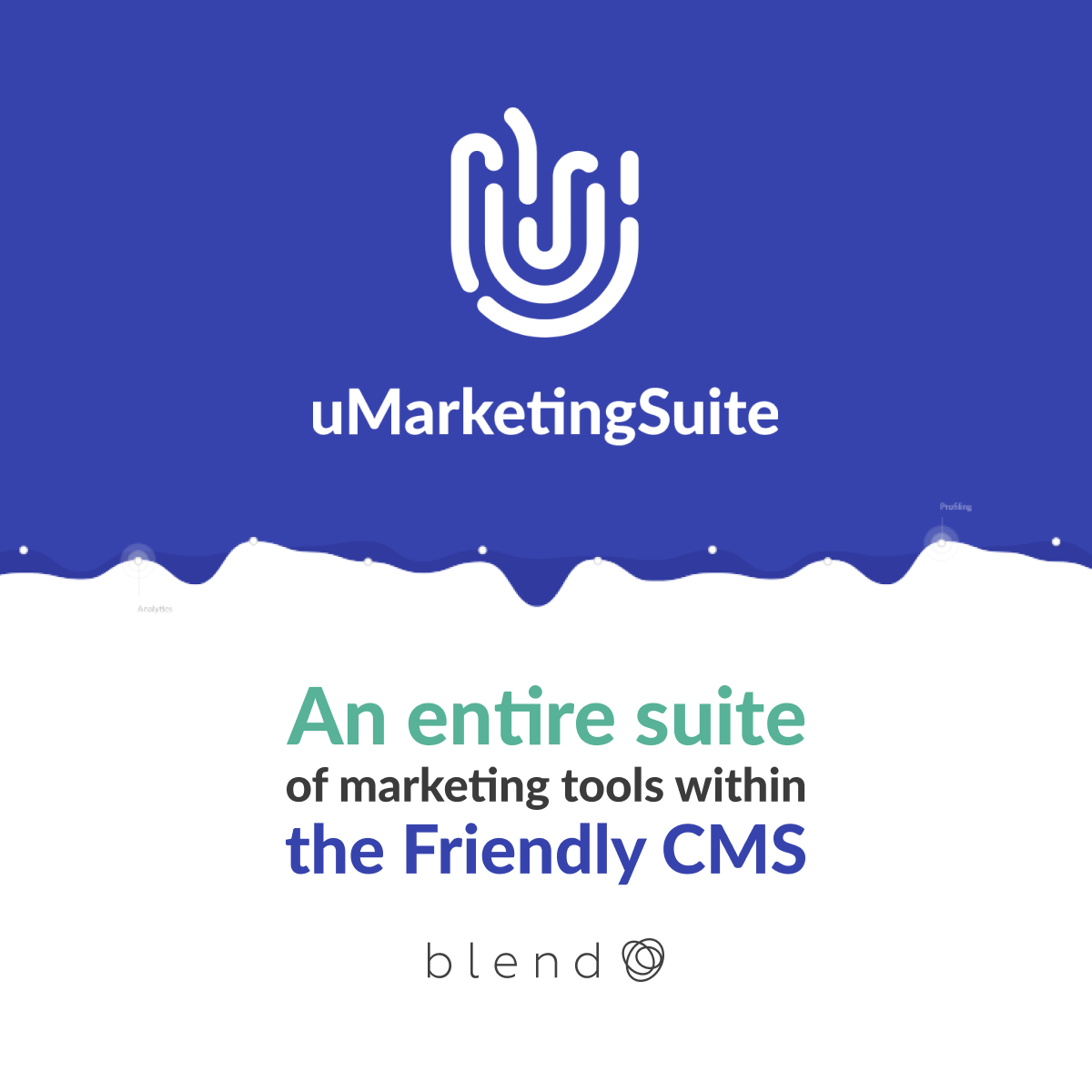Blend has a new CMS partner! Check out all the details on our newest supported platform.
From Content Analytics to Intelligent Content: a Review of uMarketingSuite
In the early days of the web, analytics shifted from curiosity to a driving force. Now, the focus is on what you do with those analytics — what insights can you glean in order to help drive conversions? For Umbraco users, uMarketingSuite helps put these insights into action.
11/7/2022
Authored by
Categorized
In the early days of the web, analytics started as a curiosity. Some of the earliest interactive web “scripts” were digital hit counters that increased as users visited a page. As a single number, this wasn’t good for much other than inflating your own ego if you made something cool.

As the web evolved, site analytics exploded into complex packages, measuring a variety of user behavior — total traffic, average time on site, bounce rate — all focused on the goals of engagement and retention. They measured how well you could get users on your site — and how long you kept them there.
Now, the focus is on results. As sites have become more complicated (and often more expensive) our focus has moved beyond delivering engagement and toward delivering results. We’re moving beyond content analytics and towards a focus on content intelligence and personalization. We’re not as interested in the time people are taking, but whether they’re getting in touch, buying the product, or otherwise moving the mission of the site forward.
It’s not just about measuring, it’s about adapting to provide the best content for the user given their situation.
Evolving from analytics to insights.
The difference between simple analytics and content intelligence is context. Simple analytics measure numbers. They track statistics. Content intelligence and insights require a degree of understanding — in our goals, and in our marketing plan — to help a site understand users and personalize toward better results.
This idea of “adaptive” and “smart” content is the key to delivering a great web experience — one that performs well for both a site’s users and owners. And, it’s the reason Blend chose to become uMarketingSuite’s first North American partner — simply put, uMarketingSuite brings exactly these sorts of capabilities to Umbraco.
Umbraco is an excellent system for managing content, but doesn’t provide marketing optimization capabilities out of the box. It embraces the concept of a “composable DXP;” rather than providing a single implementation of analytics, CRM, CDP, e-commerce, or other site features, it focuses on being the best CMS possible, and providing easy ways to extend the platform to use best-of-breed options for the other components needed to build a digital experience.
That whole thing about moving from analytics to insights? That’s how uMarketingSuite shows its strength. Using the extensions built into Umbraco, uMarketingSuite provides a seamless marketing optimization experience right from the Umbraco backend.
Defining your plan.
Your site relies on users — and uMarketingSuite can be configured to understand those users. But first, you’ll need a plan.
uMarktingSuite relates to site users through the use of personas — a defined set of users who help segment your audience — and customer journeys, which focus on moving personas from curiosity to action. In essence, an optimization platform automates your marketing plan.
So start with that plan. Create a definition of how different kinds of customers might use your site. Identify those personas and evaluate the importance of specific pages or articles across your various audiences. Define how you’re measuring people’s progress on these journeys and set measurable goals.
If you’ve never broken your marketing plan down like this — and really thought about how different kinds of customers move through your site — this process in itself is helpful in finding clarity in your online marketing efforts.
Once you have a good definition of how your different kinds of customers might use your site, you can figure out how content is used along the path toward making decisions. uMarketingSuite allows you to score each piece of content, so you can use user behavior to understand what type of user is using the site.
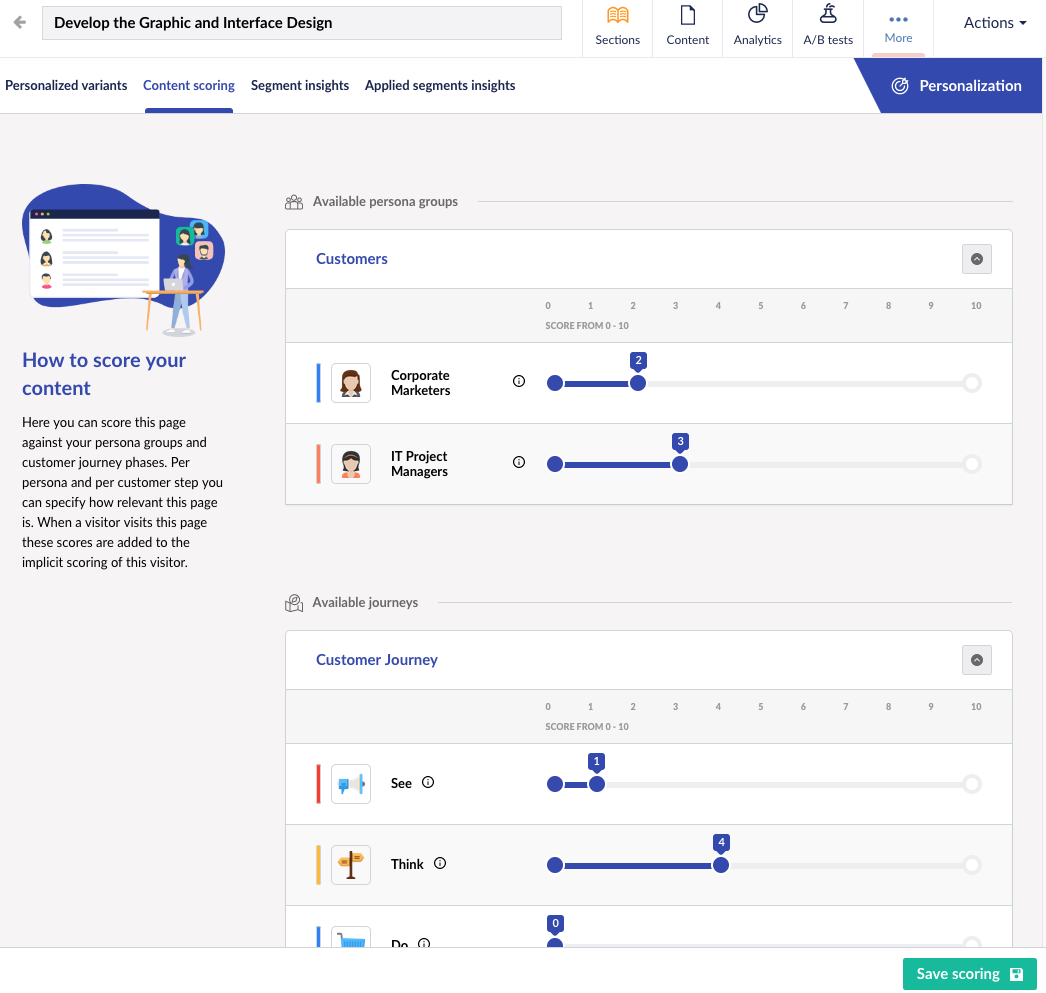
Optimizing for results.
When you have your audiences defined, and you understand how to segment your audience based on behavior, the optimization process begins. uMarketingSuite provides two methods for this: Personalization and A/B Testing
Personalizing content.
With your audience properly segmented, you can begin providing a more focused and appropriate message to each segment. There’s no need to completely change the content — instead, you can promote different content or add different calls to action.
For example, on Blend’s site, we primarily speak to clients. However, there is content that’s focused on potential employees — a key group with unique needs. For most visitors, the first message on our home page is about why you should work with us as a client. But for potential employees, we start with the open job listings. We use site activity and inbound traffic to determine who’s who — like immediately flagging people who arrive via hiring ads or job listing sites as potential employees.
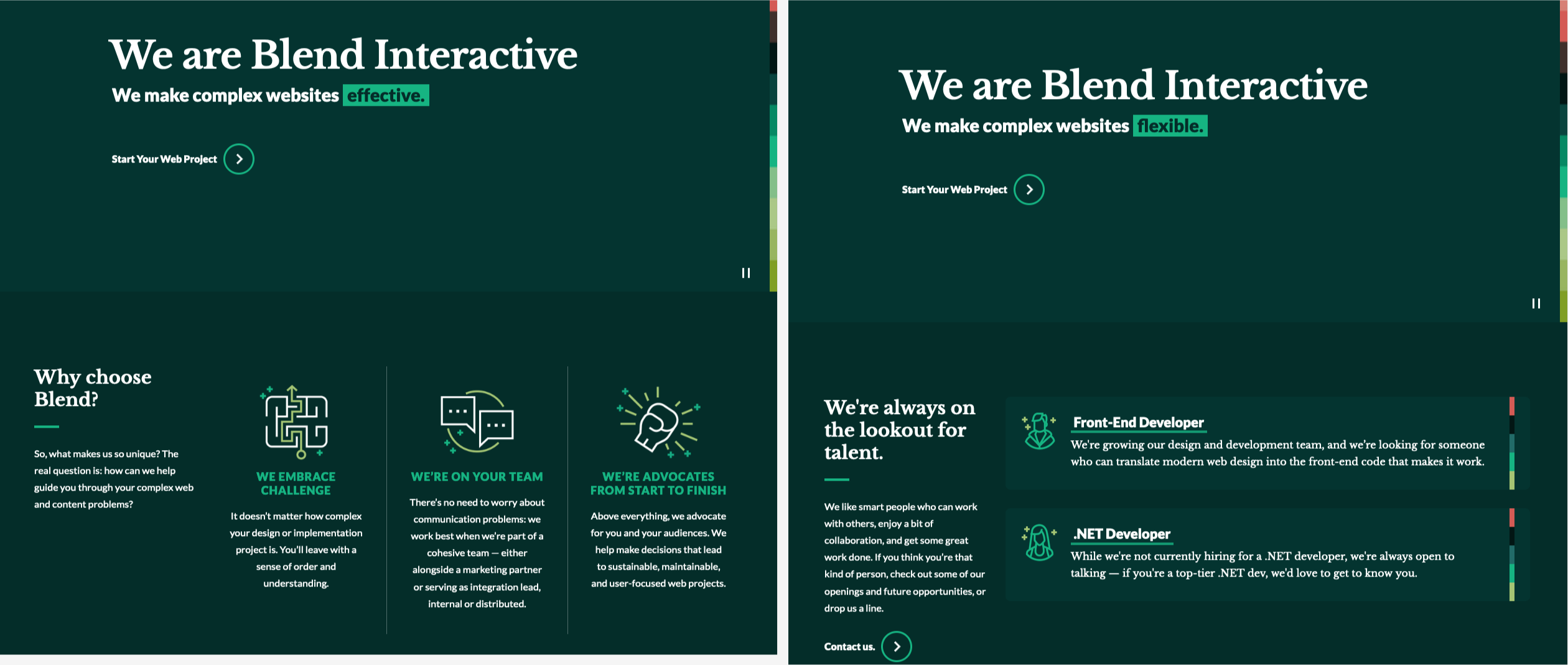
Another example: for The Web Project Guide, a home page promotional block sends users to a shop, where they can purchase a physical copy of the book. For certain conferences and in-person events, we can vary the messaging on the promotion, which is guided by either ad campaign, time, or location.
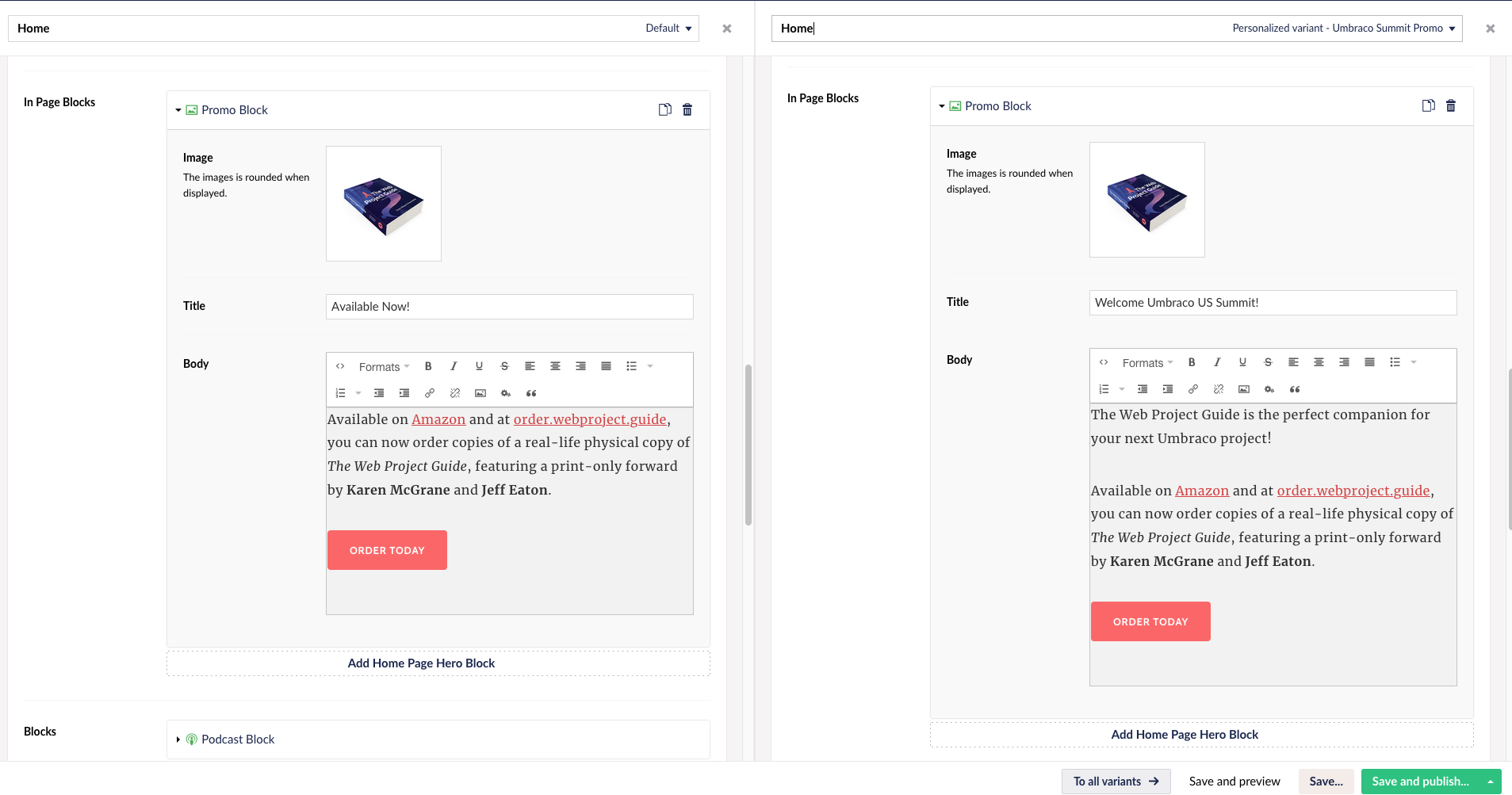
Personalizing content is an extremely powerful way to make sure you’re reaching the right people with the right message.
A/B testing.
In addition to varying your content by audience, you can improve how effective your content is over time through experimentation and testing. Is it more effective to ask your customers to ‘Buy Now’ or to ‘Get Started’? Are people more likely to respond if you highlight your service’s price or its quality?
A/B testing lets us find these things out emprically by running an experiment, showing different people different variations of our content and keeping track of how these groups perform versus our goals.
Once it’s configured, the system keeps track of running the experiments automatically, selecting the best option once it’s repeated the test with enough users to develop a statistically significant result. By setting up a cycle of repeatedly testing and improving different areas of your site, you can be sure the performance of your site is heading in the right direction.
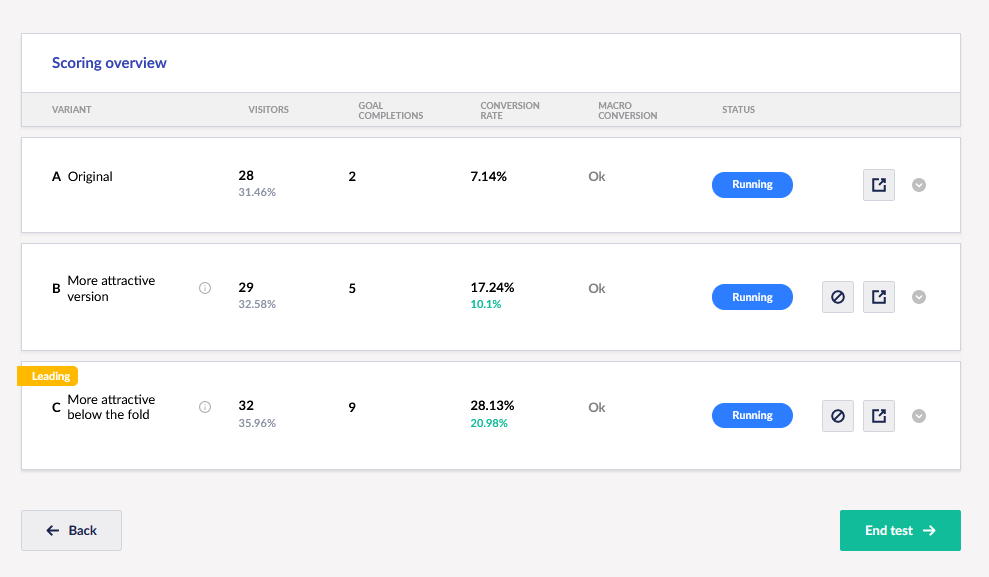
Why uMarketingSuite?
All of the things we’ve talked about so far can be accomplished with other suites of tools. So what’s different about uMarketingSuite?
Integrated.
For the most part, the downside of a composable DXP approach is that you need to learn a lot of different tools. Composing solutions for A/B testing, personalization, profiling, and analytics separately may mean logging into multiple systems, learning a lot of different tools, and figuring out how to make them work together. uMarketingSuite provides a solid set of capabilities in a single package that’s already available from your Umbraco CMS.
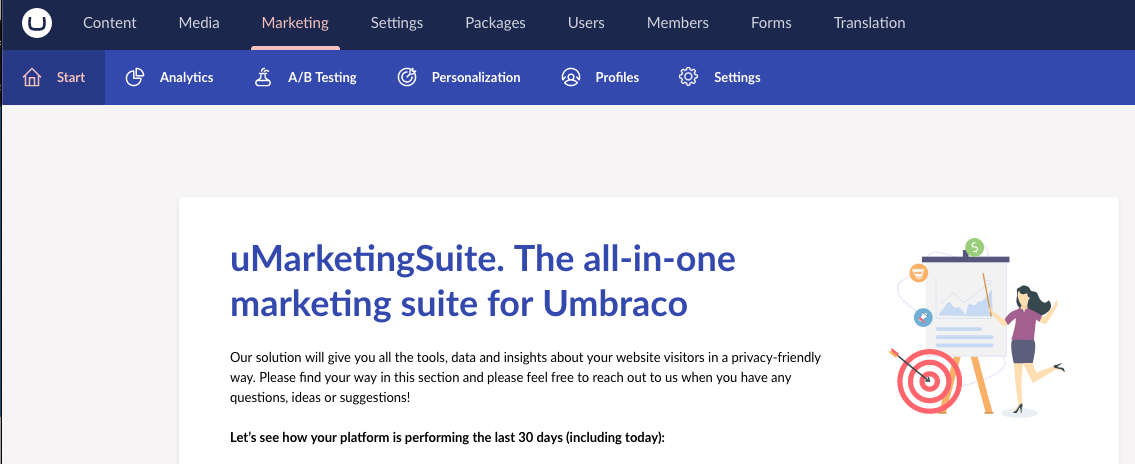
First party.
A less obvious advantage of uMarketingSuite is that it’s hosted from your website, instead of served by a third party like most other analytics and personalization systems.
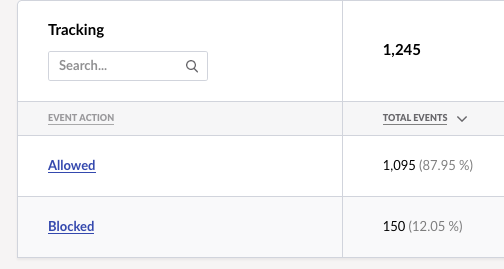
As privacy becomes increasingly important, the ability to maintain control over your users’ data and ensure that you’re in compliance with regulations is important. Additionally, as users and browsers activate more features that prevent third-party tracking, first-party tracking that’s local to your site helps you still be effective. We’ve found that more than 10% of the traffic measured by our uMarketingSuite instance had tools in place to block Google Analytics, meaning that traffic was not fully measured on our GA account.
A great place to get started.
Over the years we’ve spent helping people build web solutions, we’ve found that many teams will select a web solution based on its suite of marketing tools, only to find that integrating these tools into their day-to-day workflow is too time-consuming and complicated. This is a worst-case scenario; they’ve paid extra for the tools, but aren’t getting a return on that extra investment.
What’s needed is a simple-to-understand suite of marketing tools that minimize the extra work. Integrating these tools right into the CMS and focusing on the most common needs is a big help.
If you use Umbraco, and your team wants to get started in moving from simple analytics to making content smarter, uMarketingSuite is a fantastic place to start.
There is a Friendly Way to Manage Content
The association industry is already regulated and complex — the marketing tools you use don’t need to be too. Umbraco, also known as the Friendly CMS, is known for its seamless experience, for both editors and visitors. Engage, formerly known as uMarketingSuite, empowers teams to not just manage their content, but own their strategies. See how Engage is the right investment for your team.
Umbraco
The friendly, open-source CMS that supports your workflows, empowers your editors, and takes your website’s performance to new heights.

A deep history of work.
Blend has been working with Umbraco since 2013, and has developed sites in numerous verticals.

2024 Platinum Partner.
Blend is a Platinum Solution Partner with five Umbraco certified developers on staff.

Contributing Partner
In addition to being a Gold partner, Blend is one of 2023's Contributing Gold Partners, given to agencies that go above and beyond to contribute to Umbraco's open-source project and community.
